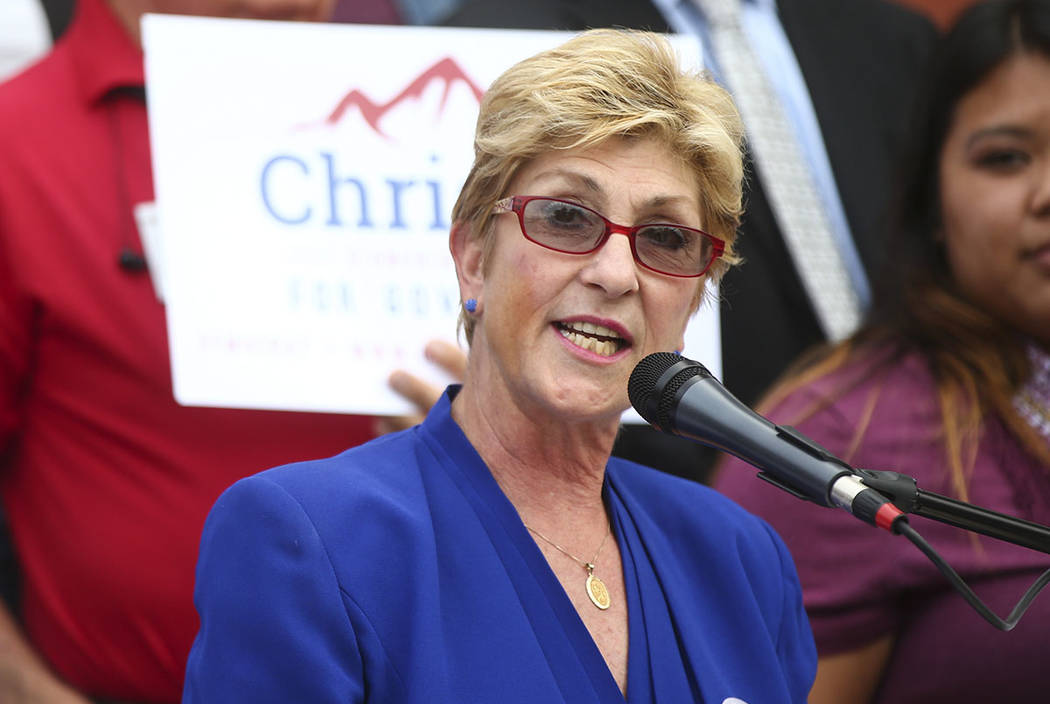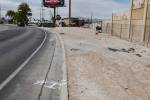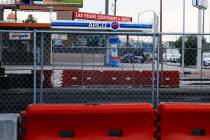Clark County commissioner pushes for larger backyards

Dennis Lytle’s backyard is a fraction of the half-acre he once owned in Indiana, but the 79-year-old homeowner has made it his own.
Since moving to Spring Valley in 1999, Lytle has filled the 37 feet between the back of his two-bedroom house and its rear property line with grass, small statues of angels, and trees bearing oranges, apples and kumquats. He enjoys it all from a shaded patio large enough to hold a couple of chairs and a couch.
“Most people buying homes today would kill to have a yard this big,” Lytle said. “I wouldn’t want to have anything smaller than this. For one thing, we have a lot of privacy here, and with that much square footage of backyard you can do just about anything you want.”
Lytle’s yard is about twice the length of current requirements under Clark County code. In the unincorporated county, where he lives, the minimum distance required between the back of a single-family home and its rear property line is 20 feet. That requirement can shrink to 15 feet in areas zoned for denser housing.
County Commissioner Chris Giunchigliani wants to change that. She announced last month that she will form a committee to explore increasing the minimum size of backyards for newly constructed homes in the unincorporated county.
“We have created problems in neighborhoods by not making them friendly to the families that have to buy there,” she said. “I think it’s absolutely key. You have to have a safe space for kids where parents know where they’re at but they can enjoy the outdoors.”
The proposal is in its infancy but already faces concerns from the Southern Nevada Home Builders Association.
“Our members have always been open to inclusion of additional open space in their communities when commissioners request it,” Executive Director Nat Hodgson said. “However, with increased costs of land, so many families already priced out of the market and the push to reducing water usage for landscaping, we’re concerned this proposal might do more harm than good.”
Pardee Homes Las Vegas Division President Klif Andrews said increasing the size of a lot by adding 10 feet to the length of its backyard could raise a home’s price by $12,000 to $15,000.
“Something has to give,” Andrews said. “Either the house has to get smaller or the lot has to get bigger. If the lot gets bigger then it certainly will cost more money.”
Urban and suburban sprawl is another thing commissioners should consider, according to Robert Lang, executive director of Brookings Mountain West at UNLV.
UNLV forecasts that the county will grow by more than 300,000 people in the next 10 years, but the mountain ranges surrounding the Las Vegas Valley aren’t going to budge.
“In the case of Las Vegas, you’ve got some of the highest-density residential because we are in a limited-land environment,” Lang said. “There’s an environmental consequence for making lot sizes bigger. People will occupy more land, and that will increase commute times to stores and schools.”
Lang and Andrews both said it should be up to homebuyers to decide how much backyard they are willing to purchase.
But some consumers see value in increasing the minimum size of backyards. Lytle said that if his backyard was only 20 feet deep, there would not be much room for anything aside from his 8-foot-long back porch.
“What good is that?” he asked. “It would be 12 feet of nothing.”
Contact Michael Scott Davidson at sdavidson@reviewjournal.com or 702-477-3861. Follow @davidsonlvrj on Twitter.



















